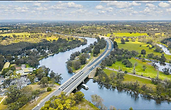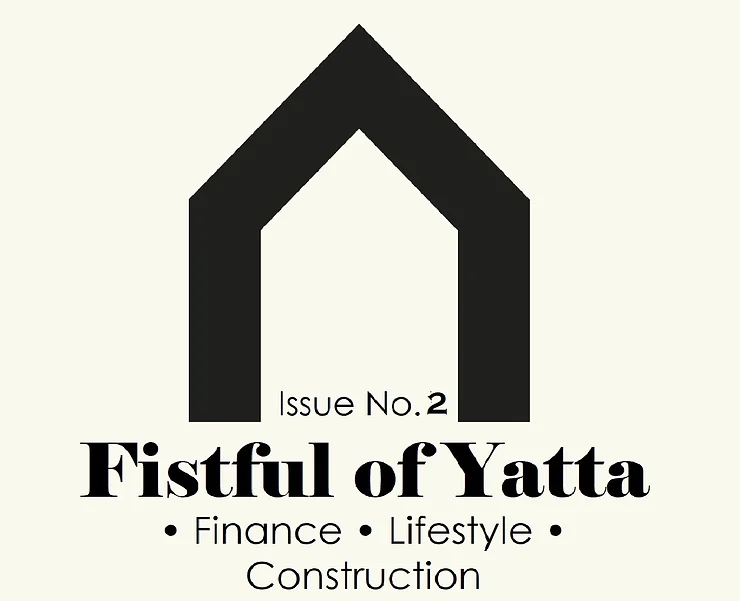Post Covid home design. New ideas?
“The Barnaby” might be a strange name for a home of the future, but that’s what this four-bedroom demonstration house claims to be. Located in a small town in South Carolina, it’s the size of an average new house in Australia and looks pretty normal from the outside. Inside, the differences are obvious: a front-door “vestibule” for no-contact home delivery, two “pocket” home offices (neither of which is a bedroom), a school room, a quarantine room, a “secret room” behind a bookcase (for being alone), and a whopping four bathrooms.
In case you haven’t guessed it yet, this is a design shaped by the pandemic. The team of architects, social researchers, and marketing experts that dreamed it up say every detail is informed by insights from a survey into the impact of COVID on homes and communities in America. What about in Australia? Here, the property industry is seeing demand for features like those of The Barnaby (though not four bathrooms). The dedicated home office is king, and there’s generally greater appreciation for good design and quality of construction.
COVID shone a light on all the pre-existing problems with our housing and asked us to do more with our houses, including working from home (WFH). So, what does an ideal post-COVID Australian home look like? And will any actually get built?

The Barnaby’s design choices were informed by the America at Home study, which surveyed more than 6,000 US adults in 2020.
It found that Millennials and Gen Xers wanted relatively uncommon features such as germ-resistant countertops and flooring, greater energy efficiency, more storage for food or water, touch-free taps, appliances and toilets, and space for more than one home office. “Post-pandemic, people have realised their homes can do more and that better design matters,” said Nancy Keenan, president and chief executive officer of Dahlin Group Architecture Planning, the California-based firm that helped design The Barnaby demonstration house. Key to making a home do more is something called “the flex space”, or a room with multiple potential uses. What this boils down to is an open-plan living room and kitchen, and then lots of “acoustically secure” (ie. decently soundproofed) medium-sized rooms that could be home offices, bedrooms, media rooms, and the like.
The Barnaby’s two dedicated office spaces are on separate levels, to minimise disruption. Along with this, there’s a scattering of tiny “pocket flex spaces” that could be used as smaller studies or walk-in wardrobes.
The idea is that a whole family (The Barnaby was designed for a Millennial couple with two young children, where one parent works from home) can use the one house for lots of different things, all at the same time. “Providing spaces in the home that can be used in many ways is key to a successful floor plan, especially when designing to smaller square footages,” Ms Keenan said. “Our clients are also exploring the viability of optioning flexible furniture systems and moveable walls to enhance space flexibility.”
From study nook to home office
These trends can be seen in Australia. Every two years, property developer Mirvac surveys customers about what they’re looking for in a house or an apartment. The most recent survey showed a clear shift in thinking, said Diana Sarcasmo, head of design at Mirvac, which has $26 billion worth of assets under management in Sydney, Melbourne, Brisbane and Perth. “Half the people we spoke to in the survey said they were looking for a hybrid working arrangement going forward,” Ms Sarcasmo said.
That change is reflected in demand for home offices.
“There’s been a 20 per cent increase in people in apartments asking for a study. And in housing, there’s double the number.”
The surge in pet ownership during lockdowns means people are willing to pay extra for doggy doors and dog-wash facilities. And hours spent WFH has made people aware of “sustainability upgrades” like thermal insulation. “People have always wanted sustainability upgrades, but weren’t willing to pay for them,” Ms Sarcasmo said. “Now 64 per cent say they’re willing to pay extra. That’s a massive shift over the last couple of years.” George Massoud, design director at Frasers Property, another large developer, agreed. He’s also seen people placing greater value on “things like quality of light, ventilation, and acoustics”. And the home office with a door you can close is here to stay.
“The mediocre study nook doesn’t cut it anymore.”

The trade winds of change
The shortage of skilled trade workers in the residential building industry is persistent.
Prior to the pandemic there had been a steady decline in the number of students studying trade qualifications, with high rates of student attrition.
The measures put in place to support apprentices retain employment throughout the pandemic disruptions have successfully reduced the attrition rate. The apprenticeship wage subsidies also contributed to a substantial jump in the number of students undertaking trade training. The approach has been very effective in motivating employers to hire apprentices and it is expected that the extension for continuing apprentices will see stronger rates of completion in the coming years.
In order to alleviate the structural shortages of skilled trades it is critical that the current level of training commencements and completions are maintained.
While creating training and employment opportunities for local workers must always remain a priority, it is also critical that the migration system provide greater scope for unmet demand for skilled trades, whether through short or long term strategies. The pandemic has clearly shown a workforce limited to local supply cannot adequately meet the nation’s needs during peak periods of home building.
The current visa categories and pathways for skilled building trades are inappropriate, complex and costly, meaning very few people take up the opportunity. The system is biased to university qualifications despite the minimum requirements to train and gain a license in Australia being through vocational education and experience.
Also, while looking at retention and training, the relevant industrial relations policy may need some more clear definition. Independent contracting underpins the high productivity rate of the residential building industry in Australia. Against this backdrop the rise of the ‘gig’ economy and contractors that work through online platforms is fuelling confusion regarding the definition of a genuine independent contractor.
Some of this confusion arises from the inconsistent treatment of contractors by government agencies based on varying definitions. In seeking to define ‘gig’ workers there is also potential for more stringent regulations that unduly impact genuine independent contracting. A streamlined, nationally consistent approach is essential and will ensure that more than 200,000 genuine independent contractors operating in residential building can continue to do business.

The Marketing Place: our campaigns in focus.
As we roll into the heart of Autumn we are upping our focus on first time homebuyers. Whilst we build houses for any buyer, in this post election malaise we are fixated upon the first time homebuyer. Because as we step into what could be an era of uncertainty, its always good to get that security that home ownership allows.
Post election cycle, we convene, recollect and embrace
the fact that its more or less business as usual.
Put simply, every extra week that you pay rent to service someone else’s mortgage, is another week that you aren’t putting yourself in the best position to succeed. Despite what issues we have sitting at our feet, as a nation. in the aftermaths of bushfires, lockdowns and floods this simple observation will always be true.
So despite the challenges that we as an industry collectively face, the lights are on and we are ready to face whatever obstacles happen to cross our path. Helping first time homebuyers navigate the possible pitfalls as well as delivering a finished product that lives up to the lofty standards of us and the expectations of the customer.
Want to know what those lofty standards look like? Reach out to us. We are ready, willing and able.

What will Perth look like in 30 years?
If your daily commute currently includes a long slow trip on the Mitchell or Kwinana freeways to the CBD, it’s frightening to think of the impact an extra 2.3 million people would have on that journey. This however is the challenge facing those planning the future of Perth, with demographers predicting that Perth’s population of 2 million is projected to reach 4.3 million by 2046.
A report by Infrastructure Australia states that in the coming 30 years, Perth, along with Brisbane, will experience fundamental change, with each growing to the size of Melbourne and Sydney today. Perth will surpass Brisbane as Australia’s third largest city.
While this will create exciting opportunities for Perth and other cities around the country, it will present everyday Western Australians, politicians and planners with some complex and hard choices. The Infrastructure Australia report outlines a number of changes that will need to be considered to ensure Perth can cope with this increased population, with a focus on the city growing up instead of further out and with evolving technology locating employment closer to where people live. Infrastructure Australia CEO Philip Davies explained the findings of the research and the challenges ahead during a recent speech to launch the report.
“Do we want to continue to live on a quarter acre block and commute hours to work?” he asked. “Or should we embrace high quality high density living close to public transport and world-class amenities, or locate our employment centres closer to where people live?” Mr Davies believes the type of city we choose to live in today will have a dramatic impact on our journey to work, congestion on our roads, cost of housing and access to public transport, schools, hospitals and our public parks in the future.
In recent years, there has been a dramatic increase in the amount of public transport. Here in Perth we are already seeing that trend with the pending construction of the Government’s main election promise – Metronet. The challenge will be to get people out of their cars and onto a train or bus. And even on the roads, the rise of new technology like driverless cars will also change the face of our city. Experts point out that driverless cars will mean the ability to pack more cars into the same area of road. That’s simply because these cars will have technology that will actually make tail-gating the way we drive with high tech capability to synchronise traffic to the point where back end crashes could virtually be eliminated. One of the biggest repercussions of this population growth for Perth, apart from transport, is the impact on housing.
According to Australia’s small area population forecasters .id, areas on the edge of the metropolitan region will have a population boom by 2036 as more and more councils re-zone land to allow owners to sub-divide.
We are already seeing in Perth the move towards packing more homes into smaller spaces. You can see this as you drive around many of Perth’s outer suburbs, with block sizes halved compared to even 10 years ago.
Closer to the city we see a relatively new phenomena in Perth, more and more apartment living. We’re also seeing more older homes being knocked down and the block subdivided so that two homes or even three or four can be built.
Forecasters predict that a staggering 400,000 people could be living in Wanneroo by 2041 and growth in Serpentine-Jarrahdale is expected to jump more than 120 percent, escalating from 31,000 people in 2018 to 68,000 by 2036.
As evidenced by the recently announced development plans for apartment living around Belmont Racecourse and the new Optus Stadium, Perth will likely continue to see more and more apartment complexes being built, and the size of blocks in new suburbs shrinking from the old quarter acre block of the 60s down to as little as 300sqm or below. And finally even the way we do our jobs will change. More and more employees are likely to be encouraged to use technology to work from home. We see this already but it just makes sense to employees and employers that, rather than spending two hours a day stuck in traffic, we will be able to achieve the same job without necessarily being in the same place. Oh yes – and one more thing. These are predictions based on what we know. Even five years ago who would have even imagined a world with Uber? Now we’re heading for a time when your Friday night pizza will come via a drone. And, to a large extent, there will be plenty of things that haven’t even been invented yet that will make living in a city like Perth look very different to what we see and experience today.
Content with more content
Now if you prefer to consume your information through audio instead of through text (which is understandable) come and check out or podcast which lives here. It is a show we are doing weekly which has a nice blend of education and entertainment aimed at the prospective homebuyer.





